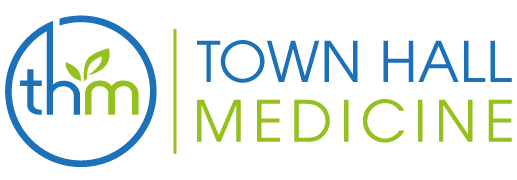THE MICROBIOME SUMMIT : The Paradigm Shift
The Curation of “The Secret World Inside You” Exhibit
Dr. Rob DeSalle, PhD

An exhibit called “The Secret World Inside You” was hosted at the American Museum of Natural History in 2016. Dr. Rob Desalle curated this exhibit and wrote the follow-up book. In this interview, Dr. Desalle will fill you with a sense of wonder as you learn why the museum chose to run this first of its kind microbiome exhibit. You will also understand how the study of the microbiome is creating a paradigm shift that will change the way that medicine is practiced in the future.
- Tracey:
- Hi, Rob. Thank you for joining me here today.
- Rob:
- Thank you for having me.
- Tracey:
- You were a part of a very successful exhibit on the microbiome. You were one of the co-curators “The Secret World Inside You” and it was at the American Museum of Natural History – can you tell us a bit about it?
- Rob:
- Sure, it opened about a year ago, actually it’s now traveling. It will probably hit Toronto in the next year or so. It was an exhibition that we felt at the Museum was very timely and very important for a couple reasons. The first being that the Museum itself is starting to do a lot of microbiology work but secondly the microbiome has become kind of a new word in our scientific lexicon and we felt it’s very important that the public get a handle on the microbiome and a good understanding of how the microbiome is changing the way we do biology and the way we do medicine. We here at the Museum when we develop exhibitions, we developed them around scientists and science at the Museum and the other scientist on the exhibition, Susan Perkins, who was a curator here at the Museum too, and I sat down and tried to figure out things that we thought the public needed to know about the microbiome and that’s how we started the whole process.
- Tracey:
- Right. How did you come to decide on your key messages? I mean, there’s so much information out there.
- Rob:
- With any exhibition we do we have to boil a lot of information down and what we did was we decided that there were three major messages that we needed to get across. One is that there’s this diversity of microbes around us that we had little knowledge about before about 5 to 10 years ago and this knowledge of diversity microbes fits well with the Museum’s mission which is to understand biodiversity on the planet. That was the first major message was to say, we don’t just have a couple of them around this we have tens of thousands if not hundreds of thousands of microbes that are associated with our bodies. The second message we wanted to get across is that these microbes affect our bodies and our physiology and our digestion, our health, our immune systems they have an impact in every aspect of our body that you could ever imagine. And even have an impact on how our brains work that through this so-called gut brain axis that works between our guts and influences our brain. So, that was a second major issue that we felt was really important, and the third is that the discovery of this diversity and how it’s interacting with our bodies has changed the paradigm of how we do medicine and this is what we call the shifting paradigm. The paradigm in medicine prior to the discovery of this vast diversity of the microbiome was kind of the single microbe causing a disease and then you go look for antibiotic for it. And instead, what we wanted to do is we wanted to get the visitors to the Museum to realize that it’s not necessarily that this arms race that we were confronted with or that scientists made the whole science of microbiology out to be. But rather a situation where microbes were interacting with each other and with us and in ecology and that instead of it being a single bacterium causing the disease rather more like the ecology becomes much more important and this shifting paradigm really is important in understanding how medicine is going to be practiced in the near future with respect to microbes and infectious diseases
- Tracey:
- Right. Absolutely. The paradigm shift that’s happening is absolutely incredible and we have to rethink how we treat pathogens versus you know all of the microbes that coevolved with us.
- Rob:
- Absolutely. And instead of finding say an antibiotic that might kill a particular pathogen. It’s more of a positive way of doing medicine and more of a positive way of thinking about our health really and that is that these microbes are interacting with us and we need to understand how they’re interacting. We need to understand the ecology. Medical doctors need to become ecologists almost and understand how these interactions are influencing the body and not necessarily go in and say we need to kill this or we need to kill that. Now don’t get me wrong, when your doctor says you need to take this antibiotic to get rid of this really bad bacteria you should but in the larger sense of medicine this paradigm shift means that we need understanding ecology of the microbes that live in and on us a lot better.
- Tracey:
- Right. Now your exhibit you focused in on you know three different ecosystems, sort of to have people understand the digestive system, the skin and reproduction as well – how we come into this world. Can you elaborate a li- on why you chose those three systems to explain to people what the shift that is happening?
- Rob:
- Skin we started with skin because that’s just really cool. Even if you take a shower you look at your skin and you go there’s nothing there but there are hundreds, if not more than the thousand different species living on your skin, maybe even more. One of the favorite skin stories that we talk about is the belly button. Your belly button is home to anywhere from 200-1,000 species of microbes and what’s really interesting about it is that everybody’s belly button tells a different story. So, you can almost tell who a person is by the kinds of microbes that live-in belly button. So skin is really a great story of how microbes get established and then start to grow to create communities. That’s why we like skin. There also some great stories we could tell with respect to skin, like a roller derby girl where a group studied women playing real derby and looked at how the microbes were passed from one team to another on the skin, which is absolutely fascinating. So the skin becomes a really important and interesting subject. It’s also the largest organ in our bodies and I mean it’s just a huge mass of tissue. We also wanted to do the digestive tract and that’s because that’s where most of your microbe live. The grand majority of them are living in your large intestine and influencing your body through their interactions with your large intestine, interactions with each other and that the chemicals that they’re producing. Again, I mentioned the brain gut axis a little bit earlier and the chemicals are being made by the microbes in your gut are influencing your nervous system all time. Most of the serotonin, which is a neuroreceptor in your body is produced by the bacteria in your gut and so that influences your brain so what’s going on in your gut is really influencing what’s going on in your brain. And that might be one of the more important areas of research for the microbiome in the future is the digestive tract. Then finally reproduction, which is really interesting because we wanted to address where you got your first microbiome. We know that the developing embryo and fetus isn’t absolutely sterile. There are some microbes there are growing there. The microbiome that you get is an infant comes from somewhere and that somewhere is either from the birth canal as the child is delivered naturally or from somewhere else if the child is delivered via C-section or caesarean section. We wanted to try to tell that story too which is very interesting and and then leads us into trying to understand how microbes affect the immune system, and how the microbiome itself is an important interactor with our immune system. So, that’s the reason that we focused on those three major things. Now there are microbiomes all over your body. In your mouth; your oral microbiome is fascinating. The nasal microbiome is fascinating. You can imagine other cavities in your body where the microbiome might be fascinating also. But these three seem to be the really cool things that we could tell nice stories from.
- Tracey:
- Absolutely. You know it’s so fun too that you made our exhibit for interactive for kids. Because kids they know what they can see and touch right? And you can’t see and touch a microbiome. They can’t see these microbes. So, you did some fun things so that the kids would get the concept.
- Rob:
- Absolutely. My boss here at the Museum said, “Well, this is a really hard exhibition because you don’t have any specimens.” And I’ve corrected them and I said sure we have trillions of specimens in this exhibition they’re around us. We just can’t see them. They’re floating around here on the surface of things. They are alive. You know this is of an exhibition in a Museum with lots live organisms in it. But your point as well taken. You can’t see them. And so, what we needed to do as we develop the exhibition was make it interesting for not only kids but for other ages coming to the exhibition. There were two things that we really focused on for children in the exhibition. One was to give the children a sense of wonder about the microbes that live on and in us and so we had a 14-foot-long projection of a woman and different parts of her body that kids could touch and then a story about a particular microbe would be told right by it and this was allowed 18 different stories to be told at the same time for the children. It is really fun to watch the kids interact with it and to see how they reacted to all of this diversity of microbes that around us. The second thing we did that I think was really a lot of fun for them was we really simulated what happens to your gut when you’re taking in certain kinds of food and so we had kind of a pinball machine device, where the kids could shoot food into the gut and watch how the microbiome of the gut changed as you put particular kinds of food into the gut. So you could shoot soda pop into the gut and watch the diversity of microbes decrease as the soda started to perfuse into the stomach. You could shoot kale in and you could watch the diversity of the microbes go up because kale and vegetable matter is usually pretty good for the microbial diversity in your gut. After a 1/2 a minute and filling the gut with different kinds of food, then the interactive would tell the visitor how that particular diet that they gave to that simulated gut affected in the diversity in the gut. It was fun to watch kids because the first thing they wanted to do was just to destroy everything to get the diversity down so they would eat lollipops and they do ice cream and white bread, and white rice, and just all kinds of bad stuff and then the next thing they would do is try to build it up, which was really a lot of fun to watch.
- Tracey:
- Yes. That’s so important for all of us to learn. I think there’s this disconnect that has been going on for years that we only really need to eat to think about, our weight or what’s the impact on our heart health. Now we have to be thinking about what well what we eat. What’s the impact on our microbes – are we feeding them or are we destroying them?
- Rob:
- Absolutely. And that’s what this interactive tried to do, it simply tried to show that a consideration of diet. You’re almost like a family farmer with the microbes in your gut. So, you have to consider your diet in order to consider how to farm or how to maintain the microbes in your gut at a healthy level. I think that interactive went along way in getting at that.
- Tracey:
- For me I think that’s one of the key messages. If people can really understand that there are things within their control that they can do with what they eat every day that’s going to make a big impact on their health overall. You wrote a nice book that did a nice summary of the exhibit as well called “Welcome to the Microbiome.”
- Rob:
- Yes, along with Susan Perkins, the co-curator of the exhibition. We tried to take some of the major elements of the exhibition and produce a narrative around it. What we tried to do in the book is tell the same stories that we tell in the exhibition – stories about microbial diversity and how microbes are interacting with each other and all over your body and your gut. We tell the story of the roller derby girls. We tell all kinds of really fun stories about how microbes are living in and on us and what that means for health. We felt very strongly as we are writing the book that we needed to have a companion for the exhibition and I think the book is a fun companion for the exhibition.
- Tracey:
- Absolutely, I enjoyed reading it.
- Rob:
- Cool. Good.
- Tracey:
- Thank you so much Rob it was a pleasure speaking with you today.
- Rob:
- My pleasure. Thank you.



